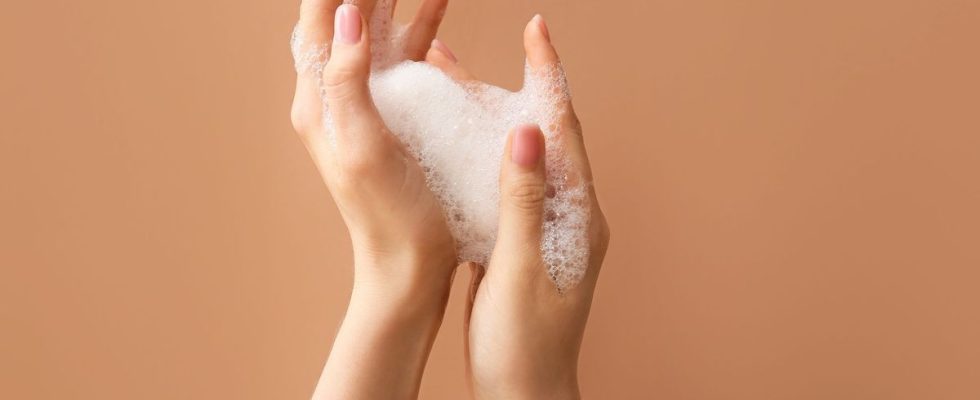Published on
Updated
Reading 3 min.
More economical than shower gel, soap is making a comeback in the bathroom to care for our skin. But in the multitude of possible choices, do you know what you need to check on the label to choose the right product for you?
Economical, ecological, perceived as more natural, soap is making a winning return to our daily hygiene to replace shower gel and is available in all forms and all benefits (moisturizing, exfoliating, etc.). But how to choose a soap for your skin? What are the mentions to scrutinize?
Each skin has its own type of soap
If it seduces you with its plastic-free and long-lasting aspect, the soap must nevertheless meet a basic requirement: clean while taking care of your skin.
There are three main types of skin: oily or dry, without forgetting sensitive skin. Of course the packaging often reminds us of the quality of the product: special for oily or dry skin, hypoallergenic, paraben-free, but this mention is not always enough to make your choice.
- So, if you have very dry, sensitive and reactive skin, opt for what is called a “syndet” (for synthetic detergent), that is to say a “soap without soap”, or “dermatological bar”. which respects the pH of the epidermis;
- For dry skin, opt for soft bars or rich soaps (with shea or sweet almond oil);
- For oily skin, you should choose an alcohol- and soap-free product to eliminate excess sebum while taking care of your skin.
Apart from 100% natural Marseille or Aleppo soaps, the vast majority of soaps on the market, designed industrially or artisanally, contain ingredients that are not essential. It is therefore a question of sorting from the list of INCI ingredients (International Nomenclature of Cosmetic Ingredients) which must be found on the label with the name of the product, the weight, the capacity, the batch number, and the use for which it is intended.
The ingredients are listed in descending order. The simplest soap is therefore the one with the shortest list. In the case of a soap, the list will contain above all:
- A fatty substance (example olive oil (Sodium olivate);
- soda (Sodium Chloride, Sodium hydroxide);
- Some water (Aqua);
- Glycerin (Glycerin);
Depending on the oils used, a soap good for the skin will also contain:
- Cocos nucifera oil or Sodium cocoate: coconut oil;
- Laurus nobilis fruit oil or Sodium laurate: laurel berry oil (Aleppo soap) ;
- Butyrospermum parkii butter or Sodium shea butterate: shea butter ;
- Theobroma cacao seed butter or Sodium Cocoa butterate: cocoa butter ;
- Helianthus annuus seed oil or Sodium sunflowerseedate: sunflower oil.
The mentions of Citral, Citronellol, Geraniol, Limonene and Linalool at the end of the list should not scare you. These are natural components of essential oils, they are not problematic in themselves, but their mention is obligatory in order to warn people who may be allergic.
Ingredients to avoid
On the other hand, other ingredients are not necessary to make good soap, and can even be dangerous.
- Everything that is Aroma / perfume and which are synthetic fragrances. These perfumes, derived from petrochemicals, are accused of being carcinogenic, of causing respiratory or reproductive problems;
- Sodium lauryl sulfate / Sodium laureth sulfate / Decyl glucoside / Cetyl alcohol. These are surfactants, which generally serve to “foam”. Not very ecological in their production method, they are also suspected of being endocrine disruptors;
- Sodium palmate or Sodium palm kernelate : palm or palm kernel oil;
- Tetrasodium EDTA: a preservative from petrochemicals.
To know : if the INCI list grows and the names become more and more complicated, it’s a safe bet that these are not natural ingredients or really good for your skin.

